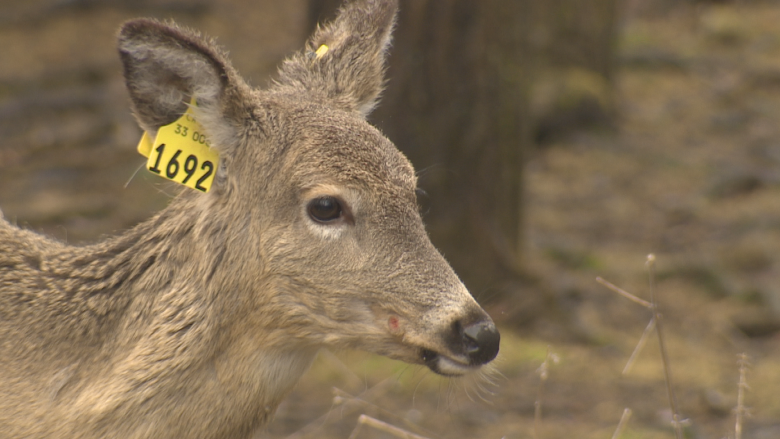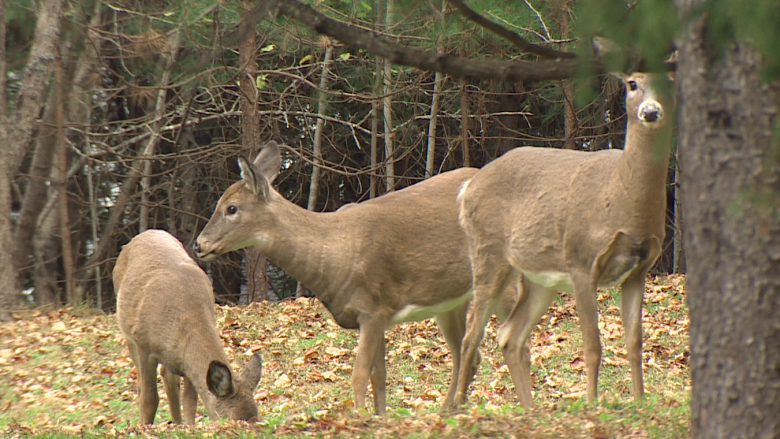Deer population's changes studied by N.B., Maine researchers
With white-tailed deer populations declining in the province, researchers and industry partners are beginning a three-year project to try and find out why.
"There is a lot of management around deer and [the] need for data to do that," said Graham Forbes, a wildlife ecologist at the University of New Brunswick, said Monday on Information Morning Fredericton.
"So, the focus is on trying to find out what causes the ups and downs, the population changes, in whitetail deer in the region,"
Forbes is one of the researchers involved with the Northeast Deer Research Network.
The network included the university, the province, the state of Maine and private sector companies, such as J.D. Irving Ltd.
Forbes said the plan is to attach satellite tracking collars to at least 100 yearlings in New Brunswick and another 30 to 40 collars on yearlings in neighbouring Maine.
The project will use GPS data over three winters to monitor the habitats the yearlings choose, to live and feed but also track survival rates in the harsh weather conditions.
"It's not as easy as it sounds. There is a lot of factors — some of them interact," said Forbes.
Besides winter conditions, other factors that impact deer populations are the increased number of coyotes, herbicide spraying and hunting and forestry practices.
"We need to get a handle on how these interact and how they influence numbers," he said.
Forbes explained the satellite collars cost $3,000 to $4,000 each and are more than the standard radio collars.
Satellite collars don't require researchers to fly over a collared deer to track and monitor behaviour and movement.
As well, satellite collars will alert researchers if a deer hasn't moved in six hours.
This will allow researchers to locate a deer and, if dead, help determine the cause.
The National Sciences and Engineering Research Council is providing funding for the project, said Forbes.
According to numbers recently released by the Department of Natural Resources, the deer population has declined by 70 per cent in the past 30 years — from 270,000 in 1985 to 70,000 in 2014.




